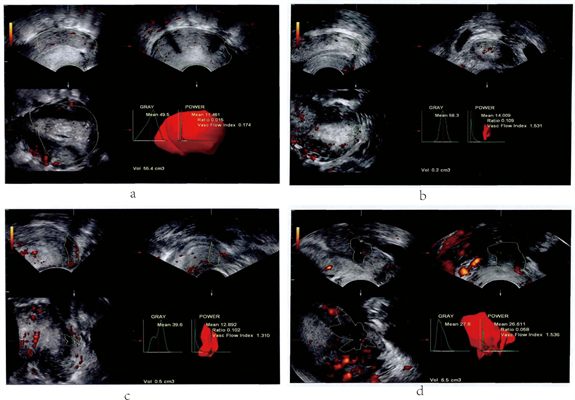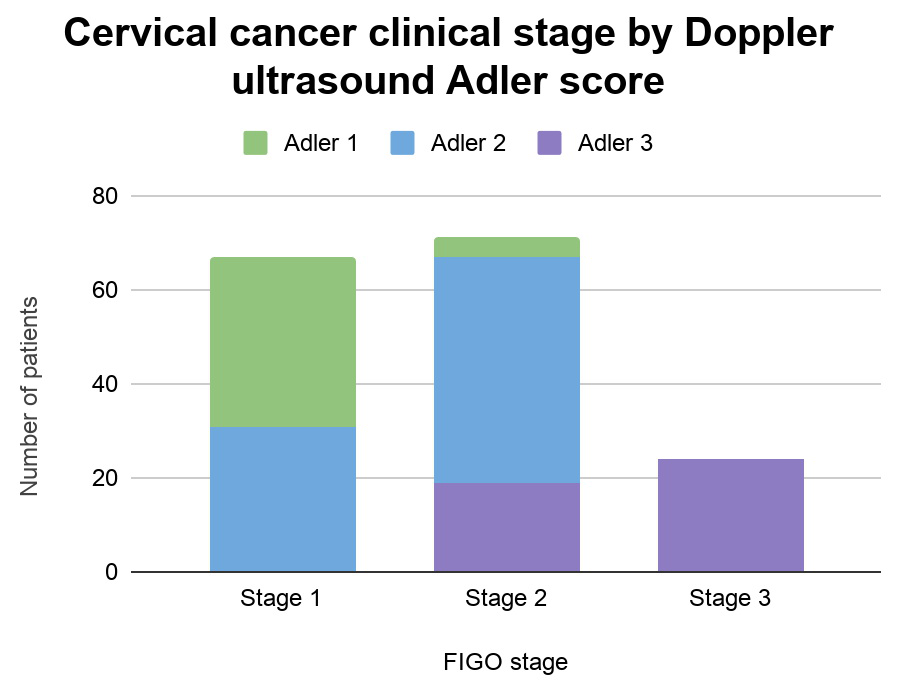By Theresa Pablos, AuntMinnie staff writer
August 18, 2020 -- Researchers in China found a link between findings on Doppler ultrasound scans and characteristics of cervical cancer. Blood flow seen through color ultrasound was tied to tumor clinical stage, cancer type, and pathology in a study published on August 10 in PLOS One.
Imaging to assist with cancer staging is crucial, and there have been calls to include more radiological imaging in cervical cancer diagnosis and staging. The new findings suggest Adler grades -- a scoring system that reflects tumor vascularization -- may help physicians assess cervical cancers using color ultrasound.
"Adler grades are closely associated with the clinical pathology of cervical cancer, which may be a convenient and effective approach for the assisting assessment of cervical cancer," wrote the authors, led by Dr. Dehong Che from the department of obstetrics and gynecology at the Second Affiliated Hospital of Harbin Medical University in Harbin, China.
Prior research found that color Doppler ultrasound scans may accurately determine tumor size, invasiveness, and vascular patterns. But while Doppler ultrasound is used in the assessment of other cancers, it is not as common for gynecological cancer assessment, the authors noted.
To determine the effectiveness of Doppler ultrasound on cervical cancer assessment, the authors enrolled 162 patients in their study. The patients had pathologically confirmed cervical cancer cases and no prior history of malignancy, cervical surgery, or uterine malformations.
A sonographer first performed a grayscale sonography examination to evaluate the cervical area and surrounding tissue before studying blood flow with Doppler ultrasound. A radiologist and a gynecologist determined an Adler grade for the tumor based on the blood flow to the lesion.
| Adler score and ultrasound findings on cervical cancer tumors | ||
| Adler score | Definition | Ultrasound findings |
| Grade 0 | No obvious blood flow | • Normal appearance |
| Grade 1 | 1-2 blood vessels with a diameter of < 1 mm | • Slightly thickened morphology
• More enhanced intra-cervical echo
• Spot-like blood flow signals
|
| Grade 2 | 3-4 blood vessels with a diameter of < 1 mm | • Uneven or thickened cervical echo
• Strip blood flow
|
| Grade 3 | More than 4 blood vessels or vessels are intertwined into a network | • Parauterine and extrauterine invasion
• Reticular blood flow
|

Click image to enlarge.
Doppler ultrasound images of cervical cancers with different Adler scores: (A) Grade 0, (B) Grade 1, (C) Grade 2, and (D) Grade 3. Images courtesy of Che D, Yang Z, Wei H, Wang X, Gao J (2020) The Adler grade by Doppler ultrasound is associated with clinical pathology of cervical cancer: Implication for clinical management. PLOS ONE, 15(8): e0236725. https://doi.org/10.1371/journal.pone.0236725.
Patients with a higher Adler score had higher clinical stages of cervical cancer, the authors found. Adler score was significantly associated with the International Federation of Gynecology and Obstetrics (FIGO) clinical stage, pathological tumor type, and squamous cell carcinoma subtypes.

Compared with FIGO stages, Adler grade achieved an area under the curve (AUC) of 0.811, with a sensitivity of 55% and specificity 90%. Compared with pathological stage results, Adler grade achieved an AUC of 0.76, with a sensitivity of 52% and specificity of 88%.
"Those results indicated that Adler grade could provide valuable reference for the diagnosis of cervical cancer," the authors wrote.
Cervical cancer is known for its rapid proliferation and active cell division -- two characteristics related to blood vessel proliferation. As a result, this type of cancer may translate particularly well to Doppler imaging, the authors noted.
"On color Doppler ultrasound images, there are often abundant different types of blood flow signals in tumor tissues, which correspond to its rich vascular network and are related to the special structure and blood flow characteristics of tumor blood vessels," they wrote.
The authors cautioned their study had a small sample size and that subjective factors can influence the Adler score. Nevertheless, they concluded that the use of Doppler ultrasound should be considered when working with patients with suspected or newly diagnosed cervical cancer.
"With the continuous development of ultrasound technology and population of clinical ultrasound applications, Adler grade should be promoted in the application of color Doppler ultrasound for the diagnosis and treatment of cervical cancer," the authors wrote.
Không có nhận xét nào :
Đăng nhận xét